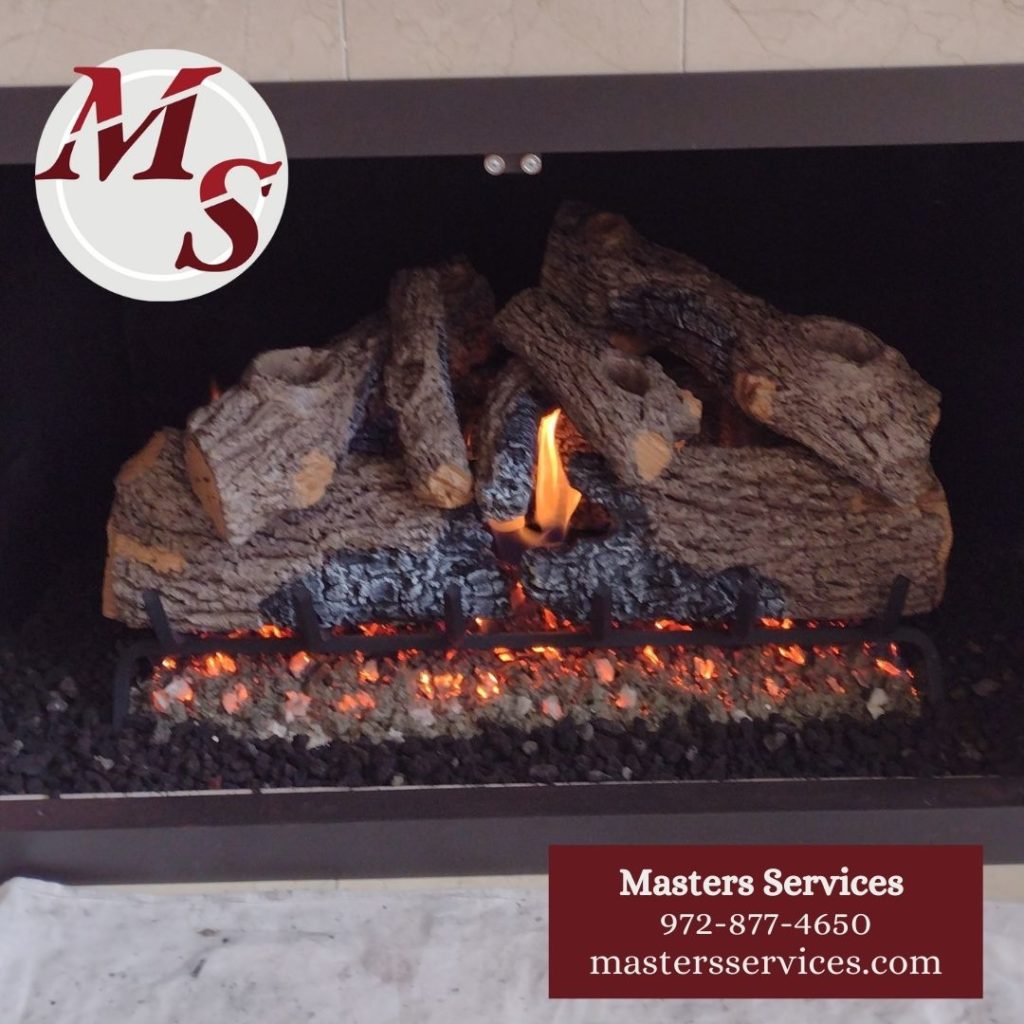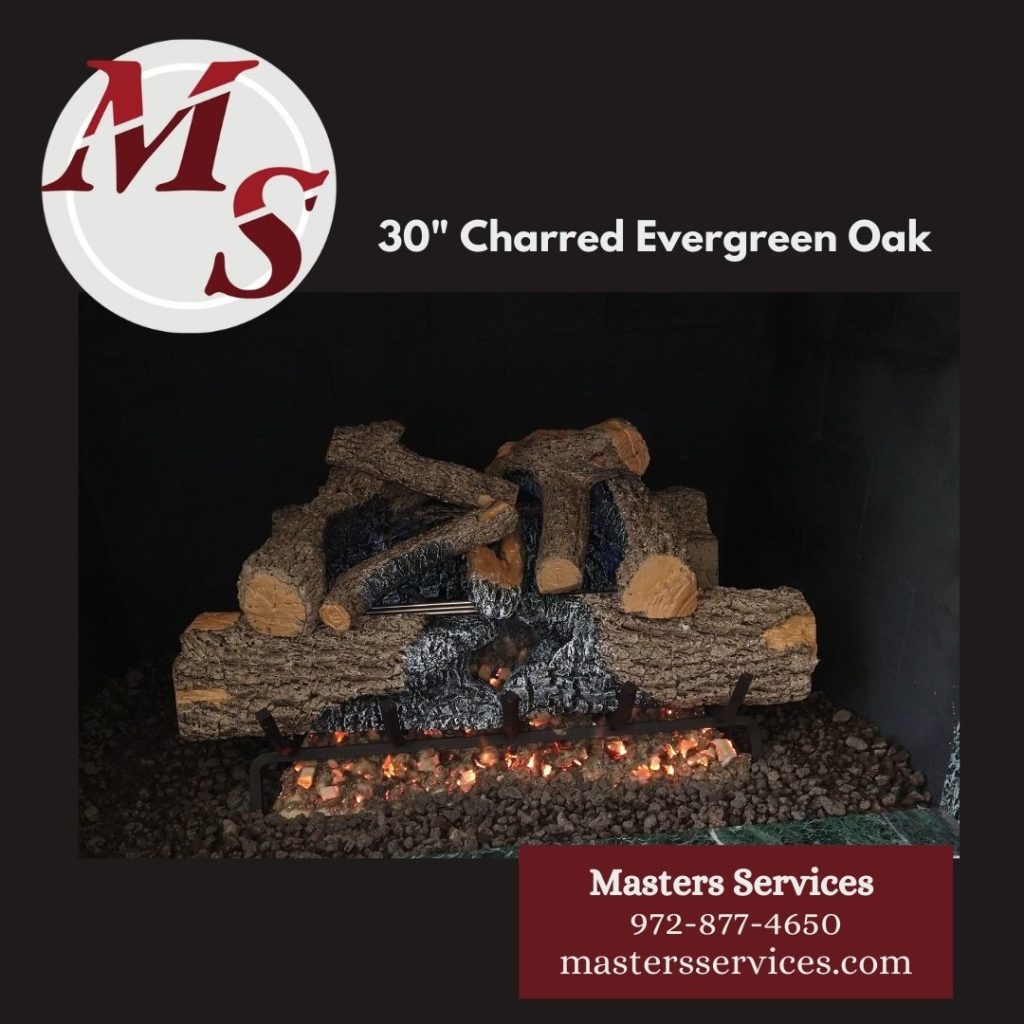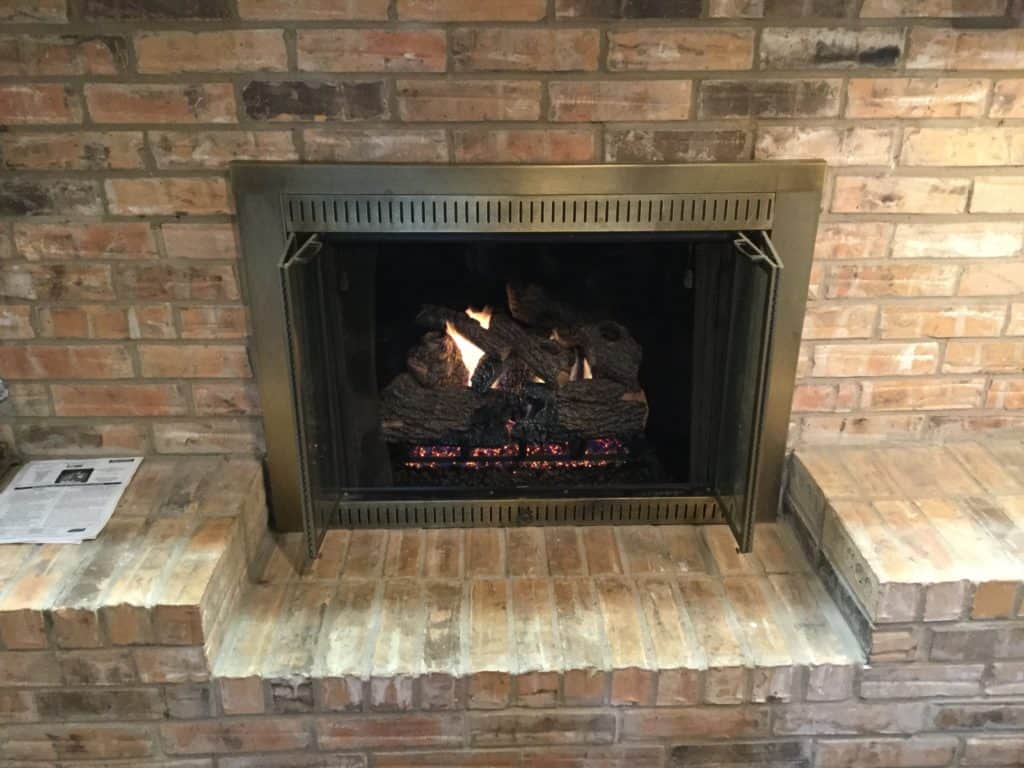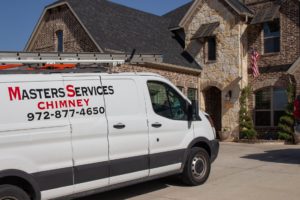Safety Precautions & Best practices when using Gas Fireplace Logs
Gas fireplace logs provide a convenient and hassle-free alternative to traditional wood logs. They offer the warmth and ambiance of a real fire without the need for chopping wood or dealing with ashes. If you’re considering using gas fireplace logs, here are some important tips to keep in mind.
Regular Chimney Maintenance
Even though gas fireplace logs produce less soot and debris compared to wood logs, it’s still important to have your chimney serviced regularly. The National Fire Protection Agency (NFPA) recommends an annual inspection and cleaning if necessary, regardless of the type of fuel you use. This ensures that your chimney is clear of any blockages and operating correctly. Regular maintenance also helps to prevent the build-up of dangerous gases such as carbon monoxide.
Tips for Using Gas Fireplace Logs
In addition to regular chimney maintenance, there are some safety precautions you should take when using gas fireplace logs. Make sure to keep flammable materials at a safe distance from the fireplace, and never leave the fire unattended. It’s also crucial to have a working carbon monoxide detector installed near the fireplace to monitor for any potential gas leaks. Carbon monoxide is a colorless and odorless gas that can be deadly if not detected early. Additionally, it’s a good idea to have a fire extinguisher nearby in case of emergencies.
Safety Precautions for Gas Log Use
For example, let’s say you have a gas fireplace log set installed in your living room. You decide to have a cozy evening by the fire and enjoy the warmth it provides. Before lighting the logs, you make sure to move any flammable objects away from the fireplace, including curtains, furniture, and decorations. You also place a carbon monoxide detector on the wall near the fireplace to ensure your safety. These precautions help to minimize the risk of accidents and ensure a safe experience.
Maintenance and Cleaning Tips
While it is possible to clean and maintain gas logs yourself, it is recommended to hire a professional chimney sweep or fireplace technician, like Masters Services Chimney & Masonry. They have the expertise and specialized tools to ensure that everything is working efficiently and up to fireplace standards. However, you can perform some basic maintenance tasks yourself, such as dusting off the logs and cleaning the glass doors or screen. Regular maintenance will help to keep your gas logs in good working condition and extend their lifespan.
For instance, you can clean the ceramic logs by gently brushing off any dust or debris using a soft-bristle brush. You can also wipe the glass doors or screen with a non-abrasive cleaner to remove any fingerprints or smudges. However, when it comes to more complex maintenance tasks like inspecting the gas connections or cleaning the burner, it’s best to leave it to the professionals. This ensures that the job is done correctly and reduces the risk of any potential hazards.
Using gas fireplace logs offers several benefits compared to traditional wood logs. First, they are much more convenient and require less maintenance. With gas logs, you don’t need to gather and store firewood or deal with ashes and soot. Additionally, gas logs provide instant heat with just a flip of a switch, allowing you to control the temperature easily. They also produce fewer emissions and pollutants, making them a cleaner and more environmentally friendly option.
For example, let’s say you live in an area where wood logs are the primary source of heating during the cold winter months. Switching to gas fireplace logs can significantly reduce the amount of time and effort spent on gathering and storing firewood. Instead, you can simply turn on the gas logs and enjoy the warmth and comfort they provide. This convenience can be especially beneficial for individuals with busy lifestyles or physical limitations.
Selecting the Fuel Source of your Gas Logs
There are two types of gas logs: vented and vent-free. Vented gas logs require a functional fireplace with a chimney or venting system. These logs produce a realistic flame and are more decorative in nature. On the other hand, vent-free gas logs can be used in a fireplace approved for them, without the need for a chimney or vent. They are designed to provide more heat and are more energy-efficient. However, they may not have the same realistic flame as vented logs.
When deciding between vented and vent-free gas logs, consider your specific needs and the condition of your fireplace. If you have an existing wood-burning fireplace with a chimney, you may opt for vented gas logs to maintain the traditional look and feel of a wood fire. The vented logs produce a more realistic flame that closely resembles a traditional wood-burning fire. On the other hand, if you don’t have a chimney or want to maximize heat efficiency, vent-free gas logs can be a suitable option. They provide a steady and efficient source of heat, making them ideal for supplemental heating purposes.
Propane Vs. Natural Gas Logs
Gas logs can be fueled by either propane or natural gas. If your home is already connected to a natural gas line, it may be more convenient and cost-effective to use natural gas. Propane, on the other hand, requires a separate tank to be installed. The choice between the two depends on your specific circumstances and the availability of gas sources.
For instance, if your home is located in an area where natural gas lines are readily available, it makes sense to choose natural gas as the fuel source for your gas fireplace logs. This eliminates the need for propane tank refills and ensures a continuous supply of fuel. On the other hand, if your home is not connected to a natural gas line, using propane may be the more viable option. In this case, you would need to have a propane tank installed and periodically refill it as needed.
Choosing the Right Gas Log Set Size
Proper sizing of the gas log set is essential to ensure safety and optimal performance. Measure the dimensions of your fireplace carefully, taking into account the manufacturer’s recommended clearance requirements. It’s important to choose a gas log set that fits well within the firebox without obstructing the gas valves or other components. If you’re unsure about the sizing, it’s best to consult a professional to ensure a proper fit.
For example, let’s say you have a fireplace with a firebox that is 36 inches wide and 24 inches deep. You measure the dimensions carefully and consult the manufacturer’s guidelines for the gas log set you want to purchase. Based on the recommended clearance requirements, you determine that a log set with a width of 30 inches and a depth of 18 inches would be the appropriate size for your fireplace. By selecting the right size, you ensure that the gas logs fit properly and allow for adequate airflow and combustion.
Gas Logs: Flame Control
Gas logs offer different options for flame control. The most basic option is a safety pilot valve, which provides a continuous flame and requires a manual ignition. A millivolt valve allows for remote operation and flame control using a wall switch or remote control. A variable valve provides adjustable flame height and heat output. Finally, an electronic ignition valve offers the convenience of automatic ignition and control through a thermostat or remote control.
For instance, let’s say you prefer to have more control over the flame height and heat output of your gas fireplace logs. In this case, you would opt for a gas log set with a variable valve. This allows you to adjust the flame to your desired level, whether you want a cozy low flame or a more intense heat output. With the variable valve, you can easily customize the ambiance and warmth of your fireplace to suit your preferences.
Gas logs are typically made of either refractory ceramic or ceramic fiber. Refractory ceramic logs are more durable and do not break down over time. They are designed to withstand high temperatures and provide a more realistic appearance. Ceramic fiber logs, on the other hand, are lightweight and more affordable, but they can deteriorate over time with prolonged use.
Experienced Dallas Gas Fireplace Log Service
When choosing between refractory ceramic and ceramic fiber gas logs, consider your priorities and budget. Refractory ceramic logs are the premium option, offering superior durability and a more authentic look. They are made from a high-quality material that can withstand the heat generated by the gas fireplace logs. On the other hand, ceramic fiber logs are a more budget-friendly option that still provides a realistic flame and heat. While they may not last as long as refractory ceramic logs, they can still offer many years of enjoyment when properly cared for.
Gas fireplace logs provide a convenient and efficient way to enjoy the warmth and beauty of a fire without the hassle of traditional wood logs. By following these tips and taking the necessary safety precautions, you can have a safer and enjoyable experience with your gas fireplace logs. Regular maintenance and proper usage will help to prolong the lifespan of your gas logs and keep them operating at their best. So go ahead, sit back, and relax in front of your gas fireplace knowing that you’re making the most of this modern heating option.
Gas Fireplace Logs Installation Service in Dallas
At Masters Services Chimney & Masonry in Dallas, TX, we take pride in being your trusted partner for all your chimney needs. Our team of experts is dedicated to educating homeowners on fireplace safety and functionality of your chimney. We offer a comprehensive range of services, including thorough chimney inspections, professional chimney sweeps, and expert Gas Log installation and maintenance services. Whether you need a routine checkup, a thorough cleaning, or want to enhance the warmth and beauty of your home with gas logs, we’ve got you covered. Don’t wait to address your chimney needs—contact us today for top-notch service, peace of mind, and a cozy home all year round. Your safety and satisfaction are our priorities!















